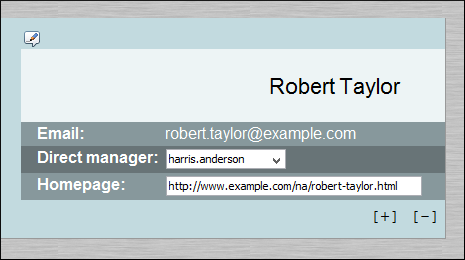Using Form Controls in Author Mode
Form controls make it easier to capture, organize, and edit content. They are especially helpful for less technical users because form controls provide a way to interact with the content of a document in a graphical manner without intimidating the user with the XML structure.
- Audio - A media object that plays audio clips.
- Browser - A media object that renders HTML frames or interact with SVG documents
- Button - A graphical user interface object that performs a specific action.
- Button Group - A graphical user interface group of buttons (such as radio buttons) that perform specific actions.
- Checkbox - A graphical user interface box that you can click to select or deselect a value.
- Combo Box - A graphical user interface object that can be a drop-down menu or a combination of a drop-down menu and a single-line text field.
- Date Picker - A form control object that allows you to select a date in a specified format.
- HTML Content - A graphical user interface box that is used for rendering HTML content.
- Pop-up - A contextual menu that provides quick access to various actions.
- Text Area - A box that allows you to enter multiple lines of text.
- Text Field - A graphical user interface box that allows you to enter a single line of text.
- URL Chooser - A dialog box that allows you to select the location of local or remote resources.
- Video - A media object that plays videos.
The following image is an example of several form controls rendered in Author mode. The first (Direct manager) is a combo box with both a drop-down menu and an editable text field. This is followed by a simple text field (Homepage), and the [ + ] and [ - ] icons also represent button form controls that are assigned specific actions to add or delete records from the document.

You can use your imagination to envision the multitude of ways that you can use form controls to make the editing experience for content authors easier and more efficient. As a working example, a bundled samples project (located in the samples folder inside the Oxygen XML Editor Eclipse plugin installation directory) contains a file called personal.xml that contains form controls. You can use this file, along with its corresponding personal.css file to experiment with an example of how form controls can be implemented in Author mode.
